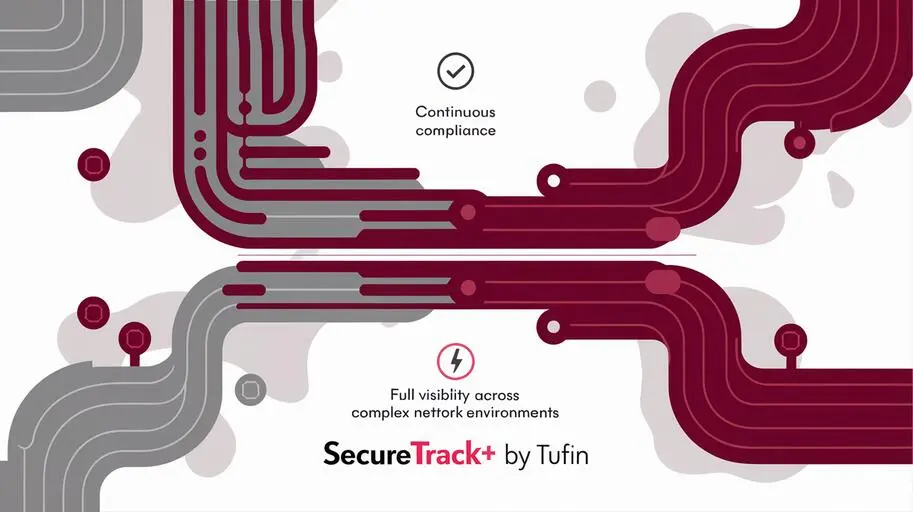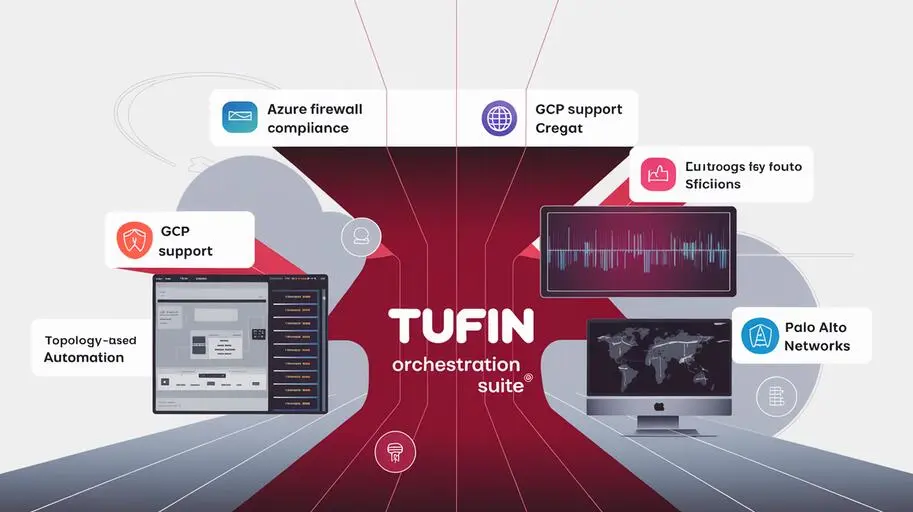In today’s IT environment, where clouds, on-premise, and hybrid infrastructures are intertwined, managing disparate security policies creates serious business risks. Unified Security Policy, backed by Tufin solutions, offers a strategic approach to centralized management and automation, reducing risks, ensuring compliance, and improving operational efficiency.
What is a Unified Security Policy and Why Does Business Need It
Unified Security Policy is a strategic approach to the centralized management and automation of security policies at all levels of the IT infrastructure, from firewalls to cloud platforms. It includes key components: centralized management, automation, orchestration, complete visibility, and continuous monitoring.
Business Value of a Unified Security Policy
- Risk Reduction: Protection against cyberattacks through consistent and up-to-date policies. Centralized management allows for the rapid implementation and updating of security policies at all levels of the infrastructure, minimizing vulnerabilities and preventing unauthorized access.
- Compliance: Simplifying audits and demonstrating compliance with regulatory requirements (GDPR, PCI DSS, HIPAA). Tufin helps companies comply with GDPR, PCI DSS, and HIPAA requirements by providing tools for monitoring and reporting on security policies.
- Improved Operational Efficiency: Reducing manual work, automating changes, optimizing policies. Automating routine tasks, such as making changes to security policies, frees up IT specialists to solve more complex problems.
- Accelerated Digital Transformation: Providing a secure and scalable environment for innovation. A Unified Security Policy enables companies to quickly and safely deploy new technologies and services without fear of security breaches.
- Cost Effectiveness: Reducing operating costs, reducing the risk of non-compliance penalties. Cost-effectiveness of security policy orchestration is achieved by reducing the time spent on policy administration, reducing the number of security incidents, and reducing the risk of non-compliance penalties.
What problems does a Unified Security Policy solve?
Unified Security Policy solves problems related to:
- Complexity and fragmentation of security policies in a heterogeneous IT infrastructure.
- High operating costs for manual policy management.
- Risks of errors and vulnerabilities associated with inconsistent policies.
- Difficulties in ensuring compliance with regulatory requirements.
The Role of Security Policy Orchestration (SPO)
Security Policy Orchestration (SPO) is a key tool for implementing a unified security policy. It is a set of technologies and processes designed to automate, orchestrate, visualize, and manage security policies in a complex IT infrastructure.
Key features of SPO:
- Automation: Automating routine tasks, such as making changes to security policies, frees up IT specialists to solve more complex problems.
- Orchestration: Orchestration allows you to coordinate and synchronize security policies across different devices and platforms.
- Visibility: Providing complete visibility of security policies and their impact on the IT infrastructure.
- Risk Analysis: Identifying vulnerabilities and inconsistencies in security policies.
- Change Management: Control and automation of the process of making changes to security policies.
Benefits of security policy orchestration for business
- Reduced time to deploy changes to security policies.
- Improved visibility and control over security policies.
- Minimizing the risk of errors and vulnerabilities.
- Increased operational efficiency.
- Automation of compliance with regulatory requirements in the field of security.
Analysis of market prospects for security policy orchestration
The SPO market is in a stage of active growth, driven by the increasing complexity of IT infrastructures, the increasing number of cyber threats, and the tightening of regulatory requirements. Companies are increasingly aware of the need to automate and centralize security policy management to protect their business.
Tufin Solution for Unified Security Policy
Tufin provides a platform for effective security policy orchestration, providing organizations with centralized management, automation, and visualization of policies in a heterogeneous environment.
Key features of the Tufin solution:
- Centralized policy management in a heterogeneous environment (firewalls, cloud platforms, microsegmentation).
- Automation of policy changes with risk control and integration with ITSM systems.
- Security policy visibility and risk analysis to identify vulnerabilities and inconsistencies.
- Policy optimization to improve network performance and reduce redundant rules.
- Automated compliance with regulatory requirements.
How Tufin Helps Customers Implement a Unified Security Policy
Tufin helps customers implement a unified security policy by providing tools for centralized management, automation, and visualization of policies in a heterogeneous environment. How does Tufin help achieve compliance with security standards? The Tufin platform provides automated monitoring of compliance with security standards such as GDPR, PCI DSS, and HIPAA, simplifying audit and reporting processes.
Example of successful use of Tufin
Company N, a large financial institution, was able to reduce the time to make changes to security policies by 70% through automation with Tufin, significantly improving its operational efficiency and reducing risks.
Market Trends and the Future of Unified Security Policy
Current Market Trends:
- Increasing complexity of IT infrastructure.
- Shortage of security professionals.
- Increasing number of cyber threats.
- Tightening of regulatory requirements.
The Future of Unified Security Policy:
- Increased automation.
- Integration with artificial intelligence.
- Cloud security.
- Microsegmentation.
The Importance of a Strategic Approach to Security Policy Management
A strategic approach to security policy management is essential for ensuring the sustainable development of your business. Companies that invest in automation and centralization of security policy management will be better protected from cyber threats, will be able to comply with regulatory requirements and improve their operational efficiency.
The Role of Security Policy Orchestration in Risk Reduction
Security policy orchestration plays a key role in reducing risks through automation, visualization, and centralization of policy management. This allows you to identify and eliminate vulnerabilities, prevent cyberattacks and ensure compliance with regulatory requirements.
Conclusion
Unified Security Policy is a strategic imperative for modern business. It enables companies to reduce risks, ensure compliance, improve operational efficiency and accelerate digital transformation. Tufin provides a comprehensive solution for implementing this strategy.
Consider implementing a unified security policy and explore the capabilities of the Tufin platform to protect your business and ensure its sustainable development. Contact us for a personalized consultation on Tufin implementation.
FAQs about Unified Security Policy
What is a Unified Security Policy?
A Unified Security Policy is a strategic approach to centrally managing and automating security policies across all levels of the IT infrastructure, from firewalls to cloud platforms.
Why does a business need a Unified Security Policy?
It helps reduce the risk of cyberattacks, simplify regulatory compliance, improve operational efficiency, accelerate digital transformation, and lower operational costs.
What problems does a Unified Security Policy solve?
It solves problems related to the complexity and fragmentation of security policies, high operational costs, the risk of errors, and difficulties in ensuring compliance with regulatory requirements.
What is Security Policy Orchestration (SPO)?
SPO is a set of technologies and processes designed to automate, orchestrate, visualize, and manage security policies in a complex IT infrastructure.
What are the benefits of security policy orchestration?
Security policy orchestration reduces the time to deploy changes, improves visibility and control, minimizes the risk of errors, improves operational efficiency, and automates regulatory compliance.
What role does Tufin play in implementing a Unified Security Policy?
Tufin provides a platform for effective security policy orchestration, providing organizations with centralized management, automation, and visualization of policies in a heterogeneous environment.
What current market trends are influencing the development of a Unified Security Policy?
Development is influenced by the increasing complexity of IT infrastructure, the shortage of security specialists, the increase in the number of cyber threats, and the tightening of regulatory requirements.
Why is a strategic approach to security policy management important?
A strategic approach is necessary to ensure sustainable business development, protection against cyber threats, compliance with regulatory requirements, and increased operational efficiency.




